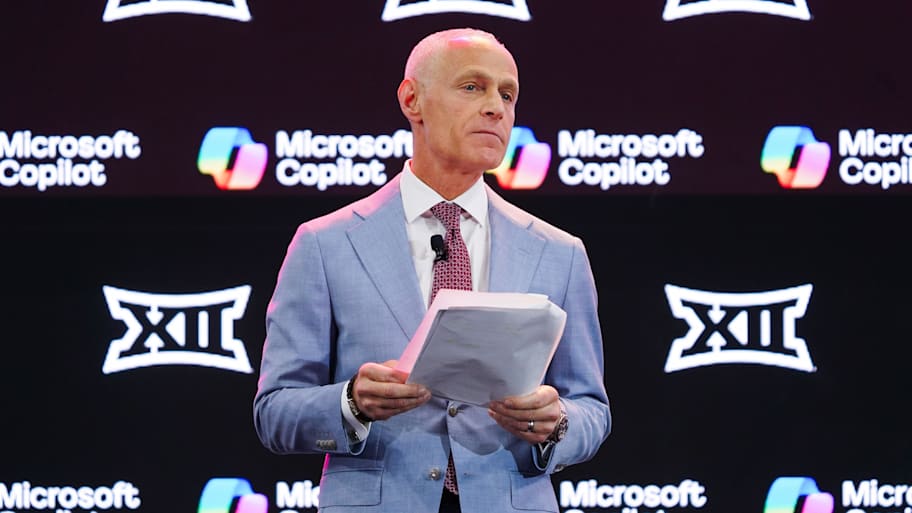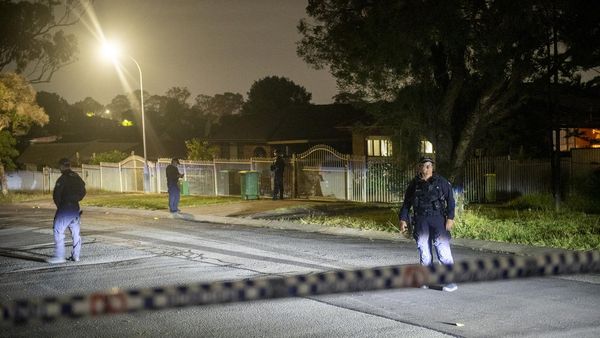
FRISCO, Texas — Talking season is upon us in college football. Soon, the real thing will be, too, and the Big 12 has something to say about that.
It should be no surprise the Big 12 wanted to go first with its annual set of media days. Equally unsurprising was the message Tuesday was one of parity and competitiveness a year after having only one team selected to the College Football Playoff’s inaugural 12-team field.
“I think the league from top to bottom is as strong as anything in the country,” Cincinnati Bearcats head coach Scott Satterfield says. “I think even the team that maybe didn’t win a game last year in the league could beat anybody in the league this year. I mean, it’s just the way it is. We saw it in the last couple years where you know teams are getting picked last, and they’re winning it, and teams are picked first and they’re finishing last. I spent four years in ACC, and I felt like it was kind of top heavy. But here, every team has got a chance to go out and compete and win the Big 12 championship.”
“Top to bottom, you better be ready to play. There are a lot of great coaches, great players and there’s a lot of parity right now in this conference,” Iowa State Cyclones coach Matt Campbell says. “I think there’s no easy out, and that’s the reality of this conference.”
Few are denying that.
Last season, the Big 12 was one of the most entertaining leagues in the country. One-score outcomes were commonplace and seemingly every other game was a play or two from being decided deep into the fourth quarter.
Much the same is expected this coming season.
Fourteen head coaches return, and there is a surprising amount of roster continuity for most teams in the conference. Most importantly, nine Big 12 quarterbacks who threw for over 2,400 yards are back for another go-around, while the other three power conferences have just 11 such signal-callers combined.
“Eight-and-a-half to five is the win-total difference in our league, and I think that right there alone tells you everything you need to know about how challenging this league is,” says reigning Big 12 champion and Arizona State Sun Devils coach Kenny Dillingham. “It’s not just difficult from a talent perspective week in and week out, it’s also difficult from a geography perspective. You’re traveling three time zones. Maybe you’re traveling to a cold area or a humid area or maybe to a dry area.
“Then all of a sudden you face West Virginia with a Rich Rodriguez spread, quarterback-driven run scheme. Then you go and face an Air Raid team which is all about drop back with a pro-style quarterback. Then you go and play an under center pro style. I think you have just such a variety of schemes in this league that not only are you playing in different environments, not only are you facing teams that are all balanced talent-wise, different schemes, I think it’s how can you build a team that can face all those obstacles. That’s the challenge.”
The bigger uphill battle facing the Big 12 is getting the proper amount of credit for such a consistent level of difficulty in the eyes of the CFP.
In 2024, that was far from the case. The Big 12 championship game represented the lone pathway to the playoff. There was hardly any discussion about earning an at-large berth among the handful of teams beyond Arizona State and Iowa State.
BYU, which finished 11–2 and ranked No. 13 in the final AP poll, missed the field by a wide margin by the committee’s rankings. The Cougars were slotted 17th coming out of CFP Selection Sunday, a spot behind the Clemson Tigers, who were the No. 12 seed, and six spots behind the SMU Mustangs, who the Cougars had a head-to-head win over.
“It doesn’t matter what the standings are, nobody cares. That’s why we’re not doing the [preseason] media poll or the coaches’ poll,” Kansas State Wildcats coach Chris Klieman says. “I thought it really hurt our league last year because if a team’s 1–6, they’re going to be just as competitive as if they were 7–1. You have a chance to win every game.”
The early narrative wound up hurting the conference’s perception even if the selection committee claimed to not take such things into account. One of the first things brought up anytime the Sun Devils were mentioned was they were picked 16th and last in the preseason league poll. BYU was slotted 13th and had a chance to play for the title going into the final weekend, too.
Meanwhile, two of the favorites atop the preseason polls, the Utah Utes and Oklahoma State Cowboys, went 2–16 in conference play.
“We’ve got to stop saying that this is a tougher conference based on one or two teams,” Texas Tech head coach Joey McGuire says. “The old Pac-12 just won the Big Ten and Big 12 last year and you’re telling me that a patch on their jersey made them a better team than they were the year before? No, that’s not it.”
That’s why it’s no wonder that parity is such a talking point around the Big 12, leaning into the level playing field almost as much as the NFL trumpets the fact that anything can happen on any given weekend.
The problem at the collegiate level is that parity is a double-edged sword for every conference. Sure it’s great that every game is competitive, but the gap between ceiling and floor also ensures there is no dominant set of teams—and even fewer national title contenders that matter in the final postseason picture.
Worse, parity can hold the Big 12 back longer term if it happens with more regularity. Just ask the Pac-12 if parity works out for a conference in football if it continually kneecaps your contenders and keeps you out of the sport’s broader discussions late in the year.
“The other leagues have their own challenges as well so I’m not here to just stand on the Big 12 bandwagon just because I’m in the league. It’s a great league, it’s one of the best leagues I’ve been in and I’ve been in them all,” Dillingham says. “Every league has its strengths, every league has its weaknesses. I think one of the most difficult things though, and what is very challenging, is to do it week in and week out.”

As much as coaches may want to focus on that slightly nearsighted viewpoint, it matters within the broader and longer term view of the playoff, too. Conference commissioners remain stuck in a stalemate on the CFP format in 2026 and beyond with commissioner Brett Yormark saying where he wants to see things go starting next season.
“We continue to believe the five [automatic qualifiers] plus 11 [at-large] model proposed by the Big 12 and the ACC is the right playoff format for college football,” Yormark said. “We want to earn it on the field. We do not need a professional model because we are not the NFL. We are college football, and we must act like it. It may not be the best solution today for the Big 12 … but long-term, knowing the progress we’re making, the investments we’re making, it’s the right format for us. And I’m doubling down today on 5+11.”
That is music to many around the sport’s ears but ultimately means quite little unless it resonates with two of Yormark’s peers who actually control the fate of the playoff in Big Ten commissioner Tony Petitti and the SEC’s Greg Sankey.
The latter seems to have softened his stance since SEC spring meetings in May where the league’s head coaches publicly stumped for a 16-team field with only five automatic qualifiers. It was a not-so-subtle rebuke of Big Ten counterparts who began a push for an NFL-like model with four automatic qualifiers each for the Big Ten and SEC while the Big 12 and ACC were guaranteed just two spots.
“I’m totally against automatic qualifiers if it’s not all the way across the board. I mean here in the state of Texas, they’ve been playing the playoffs for as long as I can remember and one district doesn’t get more teams than another district just because they say that’s a stronger district,” McGuire says. “I’d love cross-conference games to get teams in as a qualifier. Like if I’m a third-place Big 12 team, let’s go play the third-place team in the SEC to see who gets in.
“You know if you win the Big 12, you’re going to get in. And after that? You better have the right wins and maybe even the right losses.”
Last year, the Big 12 didn’t seemingly have enough of either to matter. Will that change when it becomes time to dole out CFP bids this season?
The conference certainly hopes so as the land of parity tries to become a position of strength instead of the narrative that pulls them down again this December.
More College Football on Sports Illustrated
This article was originally published on www.si.com as Big 12 Hopes Parity Will Result in Multiple Bids to College Football Playoff.







